What Can We Get From the Watershed Store?
What Can We Get From the Watershed Store?
Finding Value in a Free-flowing Watershed
Kate Morse, Copper River Watershed Project
This holiday season, we have many things to be thankful for living in the Copper River watershed–in particular, the functioning, intact watershed we call home. This watershed provides many goods and services to us for free, including basic survival needs like clean water, delicious healthy food, and wood to build and heat our shelter. If you’re living in most of today’s modern cities, these are services you pay for.
But in this part of rural Alaska, the land around us provides these services as part of its natural functions. These benefits that we don’t have to pay for are called “ecosystem services”, and they are very important to consider when making decisions about how we use and develop our land. Once the natural functions of an ecosystem are lost, it can require extensive infrastructure to do things like clean water, produce healthy food, and build and heat our homes.
A watershed is the area of land that drains rain and snow into a common drainage, in our case the Copper River. Unlike many watersheds in the world, the Copper River only has a small percentage of developed land, and streams are un-dammed and un-irrigated, with water largely meandering its own un-interrupted path through the mountains where it drains into the Gulf of Alaska.
The Copper River watershed supports valuable plant communities in the interior boreal forest and coastal temperate rainforest. Wetlands are found throughout the region, including the largest intact wetland on the Pacific Coast, the Copper River delta. Plants and their roots help to keep water clean and cool. Wetlands help absorb and filter excess precipitation or run-off during major flood events, and provide important water for fish, wildlife, and people during water shortages.
The trees in the Copper River watershed can be used for building and heating our homes. These trees also help to filter and clean our air, and their value can even be translated into dollar figures when considering their ability to sequester excess carbon from the atmosphere—in fact, on the Copper River delta, the Chugach Alaska Corporation was the first Alaska Native corporation to enter into an agreement with New Forests, a private equity firm in the carbon credit market. Chugach Alaska will manage 115,000 acres of the temperate rainforest for growth for 100 years, and will receive revenue from the sale of carbon credits to polluters needing to offset their greenhouse gas emissions through a “cap and trade” program in California.
Salmon also rely on an intact watershed to complete their complex life cycle, and sustaining individual stocks of salmon is important to help Copper River salmon adapt to a changing future, where shrinking glacial cover and snow melt will impact habitat availability and quality. (There are seven genetically distinct stocks of sockeye in the Copper River spawning at 126 sites, as currently documented in Alaska Department of Fish & Game’s Anadromous Waters Catalog.) Salmon are not the only delicious species to call the watershed home—caribou, moose, birds, mountain goats and Dall Sheep are all able to live in the Copper River watershed because they have food to grow and reproduce.
The Copper River watershed also provides many cultural services. The region has a rich history of people who have lived for generations supported by the resources provided by the intact watershed. Not only are there endless lessons to learn from these lifetimes of experiences, but this landscape continues to be valued by people today — by residents as well as the people interested in coming to see and experience a wild Alaskan landscape. Maybe it’s for a retreat, or a hunting trip, or adventure—whatever the reason, their interest in visiting our home provides opportunities for local businesses and is another benefit of living in a healthy watershed.
We hope you are enjoying special moments with friends and family as the year closes. Perhaps you will enjoy time together eating some of the fish, game, or berries you put up this year while warming by the woodstove with a hot cup of tea brewed from water fresh from the Copper River watershed. How fortunate we are to live in a landscape that takes such good care of us—let’s work together to take care of the watershed in return and ensure these priceless ecosystem services are available for generations to come.
The author and her family enjoy fishing for salmon (and eating them too!) in the Copper River watershed.


